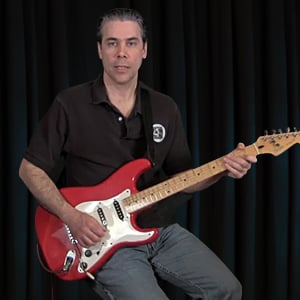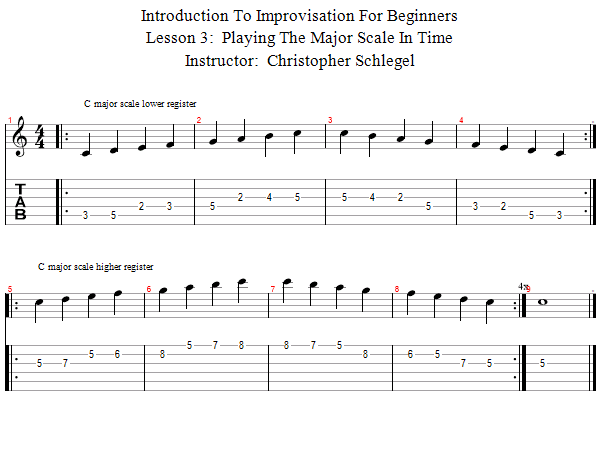- Introduction
- Identifying The Key Signature
- Playing The Major Scale In Time
- Major Scale Play Along
- Targeting Chord Tones
- Chord Tones Play Along
- Using The Scale And Targeting Chord Tones
- Melody Play Along
- Melody An Octave Higher
- Octave Higher Melody Play Along
- Modulation
- Modulation Melody Play Along
- Modulation An Octave Higher
- Octave Higher Modulation Melody Play Along
- Conclusion
Playing The Major Scale In Time
Now you know what notes you can use to improvise. The next step is "What do you do with them?"
You can play scale notes linearly (c, d, e, f, g ...) or in leaps (c, e, g, e). You can play them in 1/4 notes or 1/8th notes, or a combination of any rhythm you can think of. The overall goal of this tutorials is use the key signature to target chords and build melodies. But first let's just get used to this scale pattern in two octaves.
As a beginner you should be familiar with the C major scale in the open position. But we need to take it to the next level! So, we're going to play that scale with all fretted notes. And we're going to play it in two octaves. The reason is that you need to play all over the fretboard in order to play in any key and any position. Also, most lead melody work happens in the upper register of the guitar. So, the sooner you learn those tools, the better!
Let's play the scale together a few times for practice!

- Styles:
- Any Style
- Difficulty:
-
